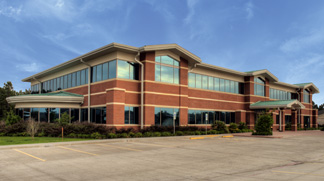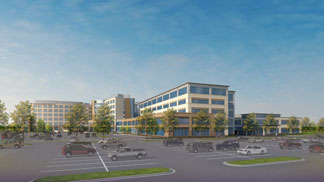MOBs Provide Real Estate Boost

Not all news in the commercial real estate industry has been bad over the past two years of the recession. Despite economic uncertainty, one of its segments has actually come into its own: Healthcare.
According to a 2010 National Office Report by commercial real estate brokerage firm Marcus & Millichap, the demand for medical office buildings continues to accelerate and “will continue to outperform” thanks to tenant demand and demographic factors. The increase in the number of tenants needing office space means that landlords will have to ensure they use something similar to the tenant screening that can be found on the AAOA website. This will allow them to efficiently reduce the large numbers of applications that the prospective landlords are expected to receive, and help to remove any that may have a poor credit history. With that, new MOB construction also is expected to remain fairly steady – unlike its traditional office counterpart, which may very likely experience a significant drop-off this year. Anybody that is considering how to sell commercial property should be studying these market trends while aiming to increase the value of their property through whatever means necessary. There are many ways to increase property value or at least prevent depreciation that do not rely on market trends. As this article by a sworn valuation service details, obsolete tech (e.g. wiring) can decrease the value of a property, therefore those wishing to market a property as a medical office should take that into account.
M&M also reports that investor demand for medical office assets “should accelerate more quickly than for traditional office properties due to comparatively stable operating performance and less re-leasing risk.” Even with a 12 percent decline in median sale price in 2009, M&M says MOBs outpaced traditional office buildings’ 25 percent decline.
“In general, the economic environment has obviously had an impact on every commercial sector out there,” says Jarrod Daddis, senior managing director of NexCore Group, a developer of healthcare properties, based in Denver, Colo. “Healthcare is unique. It’s seen some softness during this past or current recession, but I think some of the key drivers keeping healthcare ‘healthy’ are basic demographic patterns seen across the U.S.”
By demographics, Daddis points to the rapid growth of the baby boomer population in the United States, with a person turning 50 every 8 seconds. By 2011, the Center for Disease Control estimates that 78 million American’s would begin to turn 65. On top of that, with advancements in medicine, technology – and people living healthier lifestyles – the trend is that people are living longer.
NexCore recently broke ground on a $52 million, 182,000-square-foot integrated medical office facility on the campus of Silver Cross Hospital in Lenox, Ill., designed for inpatient and outpatient services, and that will include an onsite Walgreens pharmacy. The six-story building will house 70,000 square feet of hospital services on the two lower floors and 112,000 square3 feet of physician office space on four upper floors. The four floors of physician space will provide more efficient office layouts and built-in technology expansion capabilities for practices moving from the old campus. New practices bringing complementary services not currently offered by SCH will also lease space in the new medical services building.

Innovations in technology and pharmaceuticals is another factor, the M&M report states, with state of the art equipment allowing many more procedures to be done on an outpatient basis – and medicines that keep people from the hospital in the first place.
Finally, the passage of the federal healthcare bill -The Patient Protection and Affordable Care Act – and its expansion of healthcare for those previously uninsured could spike demand for “60 million square feet of medical office space between now and 2019,” according to the M&M research report.
Given these and other indicators, M&M believes developers will resume building despite previous scale-backs. However, completions won’t reach pre-recession levels until 2013, with 8.4 million square feet of MOB completions in 2010 and 7.4 million square feet in 2011 – compared to more than 17 million square feet of MOB completions from 2006 to 2008.
Douglas Strout, principal director of healthcare with San Francisco-based KMD Architects, says that he has seen the effects of the recession on the market – which had been going along at a steady clip – to one where requests for proposals virtually stopped. Since the passage of the healthcare bill, Strout says that the RFP’s have begun to circulate again, albeit slowly.
“The healthcare bill passes and hospitals are still trying to figure out what it all means,” Strout says. “When it passed, all of a sudden my colleagues in strategic consulting found that they were overloaded. In the past, this would mean work [for architects]. That not so much the same now.”
Instead, Strout says, consultants are working with medical building planners on hospital efficiency studies and such to keep their existing operations running smoothly and to not be “over-bloated.”
“What we suspect is going to happen as an outcome is a rise in outpatient facilities, either run by physicians or hospital groups,” Strout says. “We’re starting to see hospital systems leaning toward design/build or integrated project delivery.
KMD is currently in the design phase of a design/build project at the Harbor UCLA Medical Center in Torrance, Calif., and is bidding on two design/build RFP’s for high-end MOBs, with a contractor partner in the Los Angeles area.
Strout says he expects a decline big hospital projects as medical groups embrace the burgeoning outpatient models. Replacement hospitals projects, he added, will become a thing of the past, as there will also be more facility master planning.
Danny Prosky, president and chief operating officer of Grubb & Ellis Healthcare REIT II, agrees. “We expect medical office buildings to see a big upsurge in demand as people now have insurance and are out looking for healthcare services.
“MOBs are a different animal than traditional office properties,” Prosky adds. “There are several hurdles that face the investor, architect and contractor in trying to force that proverbial square into a round hole.
“The number one challenge is parking,” he says. “A medical building needs 50 percent more parking per foot than an office building. Then you have to look at exam rooms needing plumbing and cabinetry in all those suites, which is very difficult and expensive. And you need at least one restroom in every suite, which is very expensive.”
What lies ahead? According to Prosky, demand for MOB’s will continue to grow, but that doesn’t mean throwing out numbers factored on 30 million newly insured people times 1.7 foot per person. “You still need doctors – tenants-to occupy the space regardless of how many people are insured,” he says.
And therein lies another industry challenge, Prosky says.
Statistics suggest there is already a 17,000 physician shortage to handle previously insured patients,” he says. Over the next 15 years, that number could jump to 150,000, given the impending healthcare demands and factored at the typical graduation rates. And yet, the positive spin is that it all potentially creates an opportunity for new approaches.
“There’s certainly more demand for people to grow their practices – maybe hire physician assistants or nurse practitioners to see more patients because there are that many more insured Americans,” Prosky says.
Indeed, innovative “medical teams” already are beginning to form-sometimes merging several primary care offices – with a physician overseeing a group of nurses, physician assistants and other healthcare professionals so patients are treated by a member of the team when suitable instead of a regular, face-to-face doctor visit.
That alone can impact MOB trends, facility sizes, locations and functionalities, Prosky says. In other words, more change is on the horizon as healthcare evolves, additional reform is birthed and subsequent demand rises.
